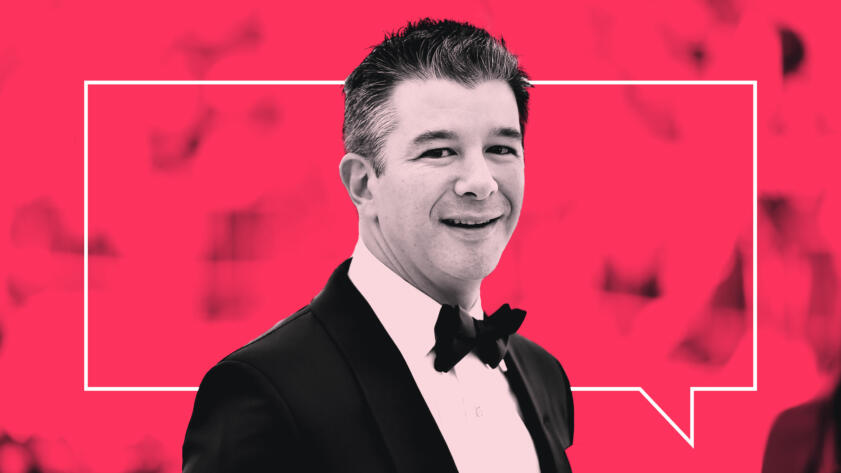At a time when reverence for the locally owned, hole-in-the-wall restaurant is peaking, the pandemic shutdown is threatening such restaurants’ very existence. Restaurants lost $131 billion in sales over the first five months of the coronavirus pandemic, according to the National Restaurant Association. But while dining in remains restricted in many cities, the demand for food delivery is growing.
Enter the ghost kitchen—also called a virtual kitchen, virtual restaurant, cloud kitchen, or dark kitchen—a nascent internet-native business model that is spreading around the world.
$131B
Restaurant sales losses over the first five months of the pandemic.
Source: Restaurant.org
When a virtual restaurant shows up in a delivery app, it may be indistinguishable from a brick-and-mortar pizza shop or mom-and-pop noodle joint, but it’s fundamentally different. The virtual restaurant is optimized for generating orders online and handing them to delivery drivers, and the name that’s advertised may not exist outside of the internet. Additionally, the menu and branding might have been created by a tech firm.
Customers who order from virtual restaurants likely don’t realize the restaurant they’re ordering from, in a traditional sense, doesn’t exist, said Claire Brown, a senior staff writer for The Counter, a nonprofit newsroom that covers food.
“They’re generally under the impression that they’re getting food from a restaurant with a storefront,” she said.
Virtual restaurants are not entirely new. Restaurants have been tricking delivery diners with fake names and numbers in New York since at least 2007, when one Chinese restaurant secretly started using the phone number of another popular restaurant that had shuttered. The rise of online directories and delivery apps made this ruse easier: In 2015, NBC discovered that 10 percent of the top-rated New York restaurants listed on Seamless and Grubhub didn’t match the names and addresses in the city’s database—and some were even operated out of unlicensed kitchens. Pretty soon, tech companies realized that a restaurant’s online presence could be malleable. While the industry is still relatively new, and it’s unclear which models will succeed, COVID-19 has kicked up a surge of interest both from restaurants and investors. Estimates of the number of virtual-only restaurants in the U.S. are as high as 100,000.
There Are Several Types of Virtual Restaurants
As Grubhub explains virtual restaurants in a guide for delivery drivers who may be confused, “Think of your favorite local mom and pop italian [sic] restaurant—Antonio’s—whose chef, Antonio, has a passion for Korean infused tacos. Antonio might make a virtual restaurant online to sell those delicious tacos under the name Krazi Kimchi Tacos.”
But there are many types of ghost kitchens.
Sometimes a restaurant may advertise multiple menus under different names online but cook all the food out of one kitchen. That’s what was happening in April, when the story of one Philadelphia woman’s experience went viral. She had ordered from Pasqually’s Pizza & Wings on Grubhub, thinking she was supporting a local independent restaurant but then realized it was owned by and operated out of her local Chuck E. Cheese.
This option could be a lifeline for high-end restaurants during the pandemic, said Scott Landers, a consultant and the co-founder of Figure 8 Logistics, which advises restaurants on delivery logistics. One fine dining client, Left Bank Brasserie, in California, has launched a mac-and-cheese concept and a taco concept.
“It allows them to, almost, out of their one kitchen, which is now very much underutilized, almost run six or seven menus that they’ve created all in-house,” he said. “It allows brand differentiation, almost like you have Lexus and Toyota made by the same company.”
However, restaurants should “make it clear who’s behind it” so customers don’t get confused, he said.
It allows brand differentiation, almost like you have Lexus and Toyota made by the same company.
Scott Landers, Figure 8 Logistics
In other cases, a virtual restaurant may operate out of multiple spaces. In February, restaurateur Robert Earl launched Wing Squad, which operates out of the kitchens of Planet Hollywood and Buca di Beppo, which are owned by another Earl company, Earl Enterprises. According to a press release, Wing Squad reduces costs by relying on existing delivery services and kitchens while enticing customers with its “Instagram-worthy” branding.
There are even companies that provide just the menu and branding for a virtual restaurant. In July, rapper Tyga partnered with Earl and Grubhub to launch Tyga Bites, a delivery-only, chicken-centric menu that restaurants can license. A search for Tyga Bites on Grubhub pulled up more than 300 listings from San Francisco to Lexington, Ky., to Reading, Pa.
Restaurants may also sublease space and equipment from a company like Zuul Kitchens, CloudKitchens, or Kitchen United, which charge monthly memberships but allow tenants to avoid the upfront costs of building out a whole restaurant. Chick-Fil-A, Wendy’s, and The Halal Guys have started renting from Kitchen United, which has raised $50 million from investors including Google Ventures and Fidelity.
The Virtual Restaurant World Is Booming
CloudKitchens, started by early Uber investor Diego Berdakin and former Uber CEO Travis Kalanick, is the buzziest startup in the space. The secretive company has been buying up real estate across the country, some of it in “opportunity zones” that come with tax benefits in order to attract jobs to a neighborhood, and around the world, according to The Wall Street Journal.
CloudKitchens owns at least 70 properties in the U.S., The Information reported in April. The food trade site HNGRY published a report this month with the addresses of 41 locations in 25 cities (12 of them “live,” with at least one location operating) in the U.S., with estimated rents from around $3,600 to $5,700 a month for a 200-square-foot kitchen. CloudKitchens, which raised $400 million from Saudi Arabia’s sovereign-wealth fund at a $5 billion valuation, also operates internationally.
You can order from a handful of different cuisines, but it’s all coming from the same kitchen….
Matt Newberg, founder of HNGRY
But CloudKitchens doesn’t just buy real estate, build kitchens, and rent to restaurants. It has also developed menus and branding for virtual restaurant concepts like B*tch Don’t Grill My Cheese and Phuket I’m Vegan under the umbrella Future Foods. Like Tyga Bites, restaurant owners can license these off-the-shelf restaurants from their own kitchens. But CloudKitchens’ model also allows an entrepreneur to start a turnkey business: Rent space at a CloudKitchens facility, choose one of its restaurant concepts, hire a few employees, and start immediately slinging orders.
CloudKitchens did not respond to a request for comment.
Matt Newberg, the journalist and founder of HNGRY, thinks CloudKitchens could also launch its own delivery service to compete with delivery apps like Grubhub. He pointed to India’s Rebel Foods, which pioneered the ghost kitchen model, as a preview of the future in the U.S.
“It’s a complete vertical play where the company that’s delivering the food is operating the kitchens and owning the brands,” he said. “You can order from a handful of different cuisines, but it’s all coming from the same kitchen, and it’s all being cooked and employed by and designed by the same company.”
Ghost kitchens, he said, give “the illusion of choice.”
Could Virtual Kitchens Kill “Real” Ones?
The model of a faceless ghost kitchen has some in the traditional food industry spooked.
“One of the main concerns is that the tech companies will basically use algorithms to figure out what is in demand in a neighborhood and then undercut whatever the local restaurants are offering by a dollar or two and get a lot of delivery traffic that way,” Brown, The Counter writer, said.
Consumer data, of course, is an essential part of this new model. Virtual restaurants offer the ability to collect data on what customers want and to test the popularity of different branding strategies and menu items with unprecedented speed and precision. UberEats also offers a slate of virtual restaurant menus based on its data about what customers are searching for on its platform.
“On average, partners with virtual restaurants saw a sales increase of more than 50%,” according to UberEats’ website.
One of the main concerns is that the tech companies will basically use algorithms to … undercut whatever the local restaurants are offering.
Claire Brown, writer for The Counter
The other trend Newberg, the HNGRY founder, sees is that chain restaurants are moving into these WeWork-style kitchens—and smaller, independent restaurants are not.
Kitchen United and Zuul “want to help independent restaurants,” Newberg said, but they’re seeing a lot of turnover as those tenants struggle to make a profit.
“I think if you’re not doing a million in sales, this isn’t for you,” he said.
The skills required for a virtual restaurant are different, he said. “It’s not a restaurant business. It’s a digital-marketing business. The food is the least important thing.”
Chains certainly do seem to be attracted to ghost kitchens, and at least some of them are doing well. Chuck E. Cheese parent company CEC Entertainment, which declared bankruptcy in June, says Pasqually’s now accounts for 10 percent of sales. Similarly, Chili’s sells food online under the name Just Wings, which brings in $3 million in sales a week, according to the company. Sweetgreen has reportedly partnered at various times with Zuul Kitchens, Kitchen United, and CloudKitchens. Meanwhile, the venture capital keeps pouring in: Virtual Kitchen, founded by another pair of Uber alumni, announced it had received another $20 million investment in September on top of the $15 million raised last year.
The rise of virtual restaurants will likely lead to consolidation and closures, said Landers, the Figure 8 Logistics co-founder. “You will see just the kind of massive corporate online restaurant the same way you see massive corporate in-person restaurants,” he said.
But he’s hopeful that a new generation of independent restaurants will take advantage of the lower barrier to starting up a new spot.
“They now have an opportunity, either through a ghost kitchen or just through an existing restaurant that had to close, to open up a new concept and be very creative in a way that I think wasn’t possible 10 years ago,” he said.





